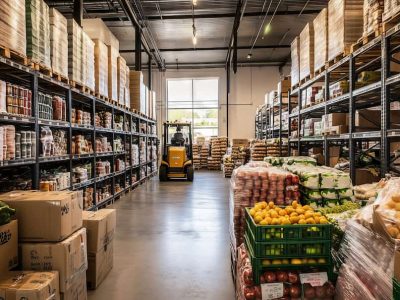Accuracy, efficiency, flexibility, and organisation are all hallmarks of picking and packing. Keeping up with demands that often include same-day shipping is vital to customer satisfaction and staying ahead of your competition.
From a logistics and 3PL warehouse standpoint, excelling at picking and packing can make the difference between a business’s success and failure.
What is Picking and Packing?
Picking and packing (or pick and pack) is a common term in logistics, warehousing, and customer fulfilment. It refers to selecting specific products from inventory, picking, and preparing them for distribution and packing.
At a glance, picking and packing may seem secondary to other aspects of business. However, pick and pack is often one of the most costly and time-consuming processes in warehousing. It is highly dependent on organisation and the ability to minimise human error.
Why is Picking and Packing Important?
Because pick and pack is the point where orders meet fulfilment, it is a vital part of the logistics process. There are a number of reasons it is a crucial element, including,
- Having an accurate and efficient pick and pack process enhances customer satisfaction by getting orders to their destinations on time.
- Maintaining excellent picking and packing also makes it possible for customers to learn logistics information in the shortest amount of time.
- Businesses can keep accurate records of inventory
- Accuracy in pick and pack helps spot trends and project future needs.
The Picking and Packing Process
- The warehouse receives an order, and an associate gets the items requested
- Depending on the system, the associate will pass the products on to a packing expert or take charge of preparing the products for shipping.
- Orders are sorted, loaded, and transported to the proper location.
It is easy to see why a well-organised system is crucial for the process to be viable. There are several common strategies that maintain order and efficiency. These include,
- Piece Picking- Each product is individually grabbed for a single order until the order is completed. While this option is time-consuming, it tends to be the most accurate. Piece picking usually benefits businesses that get few orders in a day.
- Batch Picking- Employees pick items from several orders at the same time. If appropriately organised, a worker can fulfil multiple orders at once. Businesses with a large number of orders in a moderately sized space benefit from the batch-picking method.
- Zone Picking- For zone picking to work, the warehouse must be broken into various zones. Employees will work in a specific zone, selecting products for a single order. If additional items from other zones are needed, the order will go to workers from those areas until it is completed. Zone picking is best for extensive facilities with sophisticated inventory management systems.
When choosing a picking and packing system, it is necessary to consider these points,
- Customer service requirements
- Facility size and layout
- Level of facility automation
- Physical product characteristics
- Specialised procedures
- Type of infrastructure and technology in place
Packing strategies play a crucial role in picking and packing. Poorly organised packing procedures lead to excessive (and costly) waste of materials and time.
At a minimum, workers must be trained to determine the best packaging method to ensure the product’s safe arrival at its destination without adding excess weight or wasting space.
Five Benefits of a Top-Notch Pick and Package System
- Increased efficiency- Once implemented, an effective pick-and-pack system will create a structured workplace free from disorder.
- Controlled inventory movements- Tracking shipments is simplified using the right pick and pack process.
- Customer satisfaction- There is no way to overstate the importance of customers who are pleased, and on-time delivery of products brings significant satisfaction.
- Streamlined processes- A pick-and-pack system can eliminate wasted time and products, making it possible for employees to be at their best.
- Cost-effective- Cutting away the waste and improving workers’ ability to do their jobs help reduce costs.
Picking and Packing Best Practices
- Maintain organised and visible inventory
- Streamline your packing processes
- Optimise the use of materials to avoid waste
- Use real-time order management to enable accurate tracking and call attention to any bottlenecks in your system.
- Ensure your employees are adequately trained and understand your picking and packing system.
- Review your pick and pack methods periodically to ensure you still have the optimal system in place.
A quality picking and packing system requires time and effort, especially at the onset. This is why numerous businesses choose 3PL companies to take the stress of order fulfilment. If your warehouse is running out of space, your employees must spend time with labour-intensive packing, or you are dissatisfied with pick-and-pack software, it may be time to consider working with a 3PL Perth. Bossna Logistics is the best 3PL company in Perth. Our experienced team is dedicated to your satisfaction. To learn how we can help your business, feel free to contact us.







